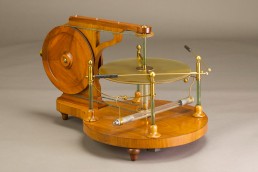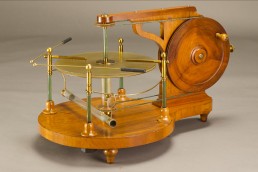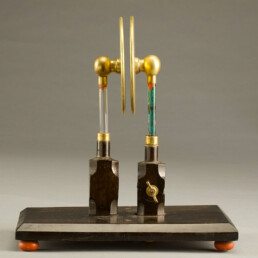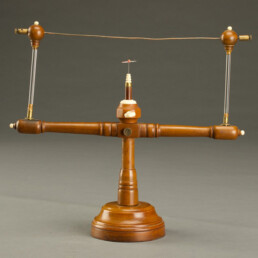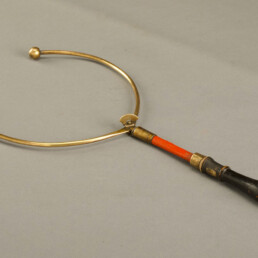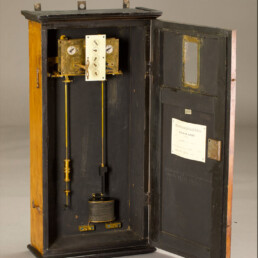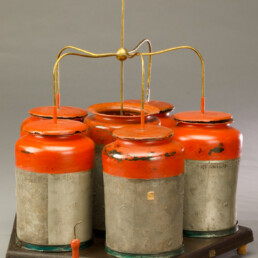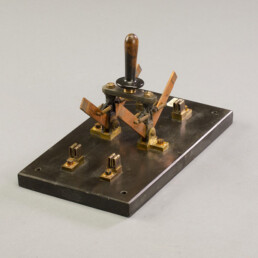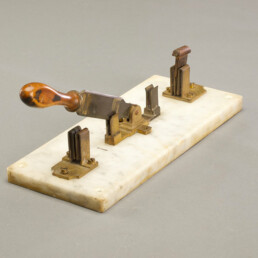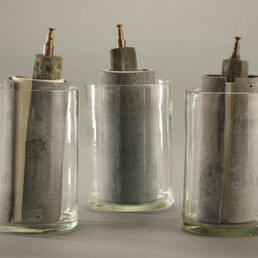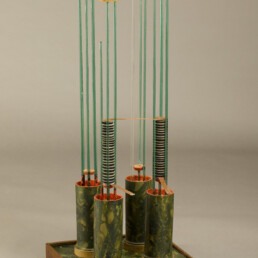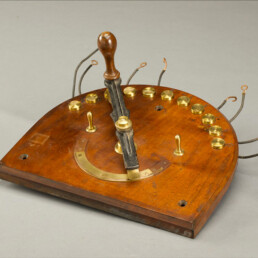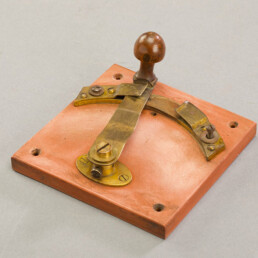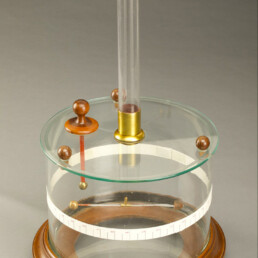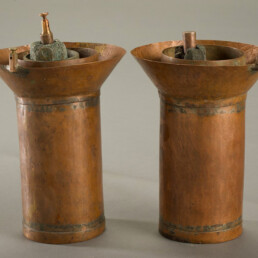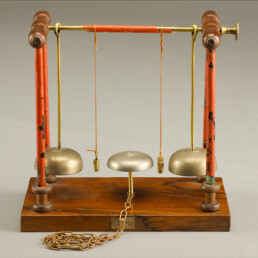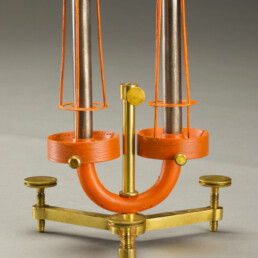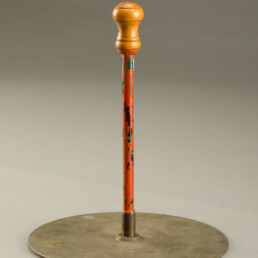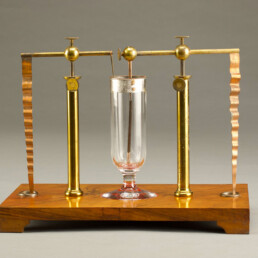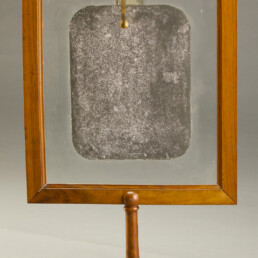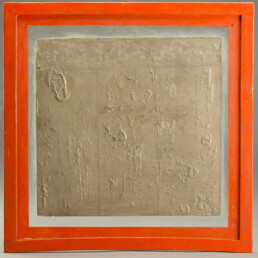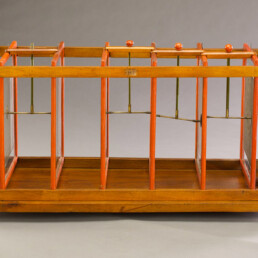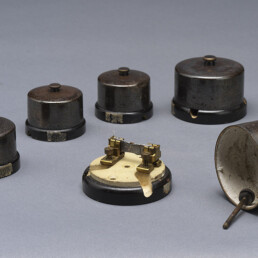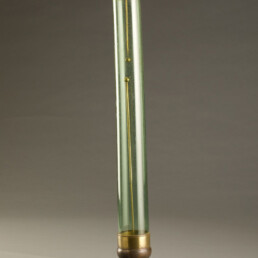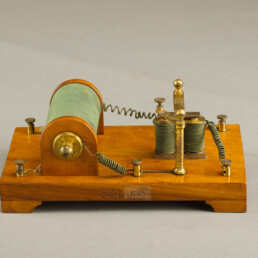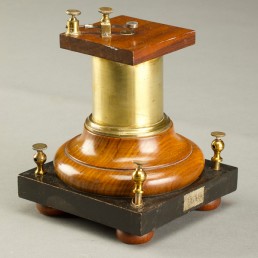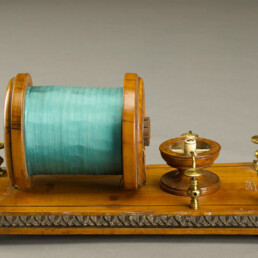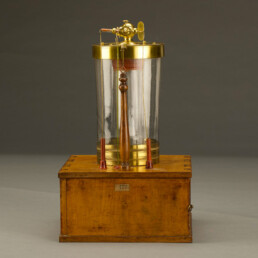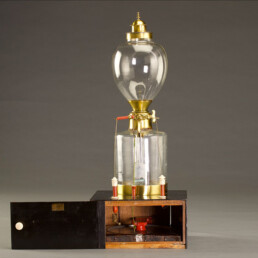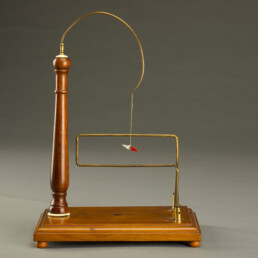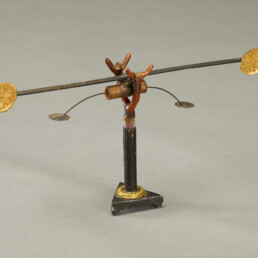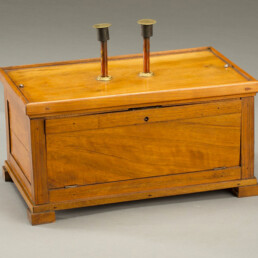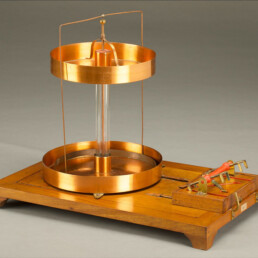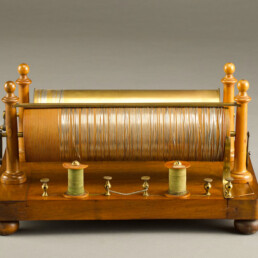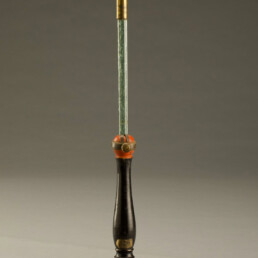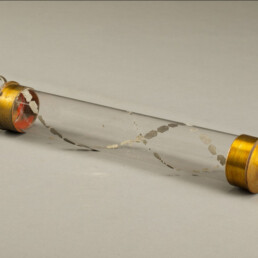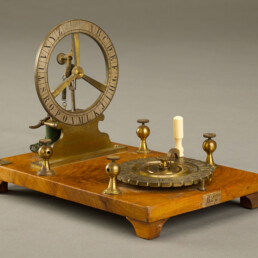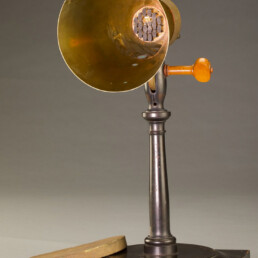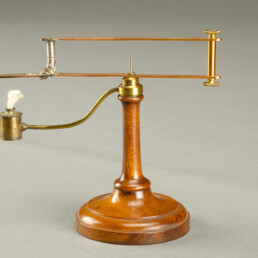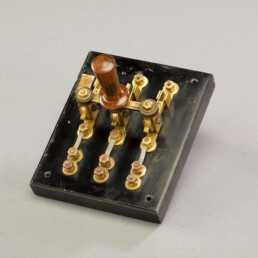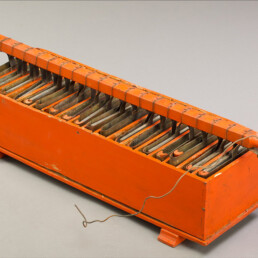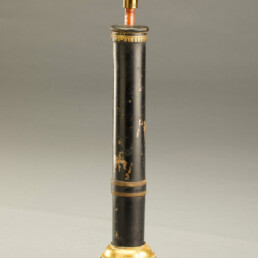An electrostatic machine generates electrical charge by means of induction. This type of machine with horizontal discs was devised by the German physicist Wilhelm Holtz (1836 – 1913) in 1867 after a prior vertical-disc model.
The shellac-coated glass discs rotate in opposite directions by when the wooden wheel is turned by means of the crank. Above and below the glass discs there are two pairs of brass combs connected by vertical crosspieces to the front columns to which the discharge rods (not original) are fixed.
In order to generate charge, the machine needs to be primed: after placing in contact the spheres on the discharge rods, an initial negative charge is produced on one of the discs (by rubbing the ebonite plate with fur), in a point corresponding to one of the combs placed on the other disc. This charge induces an opposite charge on the other disc, and these are gradually increased by the rotation of the discs and collected on the combs. The combs transmit the charge to the discharge rods; if the spheres are moved apart, a series of sparks fly between them. The brass-capped glass tube connected to the combs acts as a condenser and creates an increasing potential difference between the discharge spheres.
Instrument on display.
